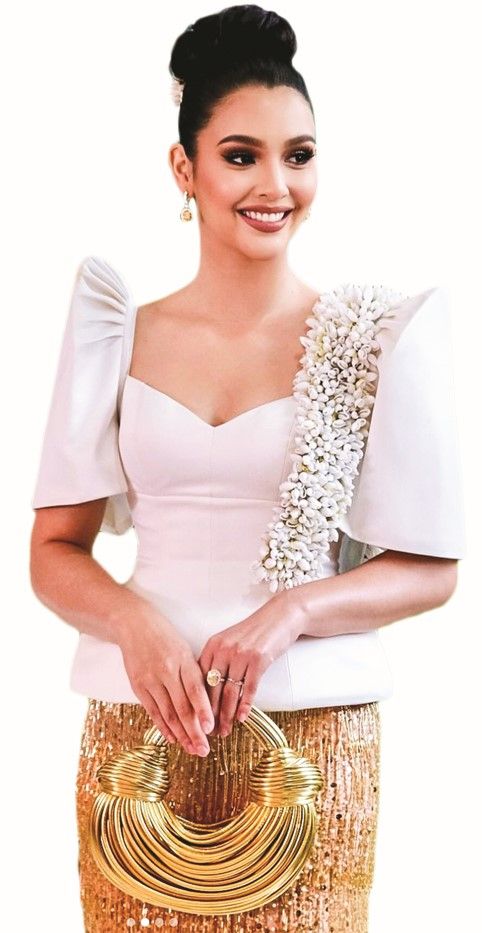The State of the Nation in fashion terms
How to do it right
On Monday, the day of President Ferdinand Marcos Jr.’s third State of the Nation Address (SONA), I got a message on Instagram from a journalism student who’s been following me for some time. “Is there anything good that comes out of covering what politicians wear during the SONA?” she asked. “What can politicians do to avoid criticism during this time
There’s varying commentary on whether or not the outfits of the SONA’s attendees should be covered by lifestyle sections and publications. Both sides have valid points but since what I’ve been asked for is the positive, allow me to share my two cents on the matter.
First, let’s acknowledge the rising interest in Filipiniana—both modern and traditional, for formal and everyday or even casual wear—over the past decade. Seeing this kind of representation at such a highprofile event and witnessing the myriad ways fashion can represent our culture, country, and advocacies have undoubtedly helped fuel this trend. While some might argue it’s distracting, others could contend that those previously uninterested in politics might initially be drawn by the display of skills of our local designers and weavers. This could lead them to pay attention to the President’s speech, which, despite what your algorithm might suggest, gets significantly more coverage than the fashion.

Moreover, fashion translates to jobs and income for many people. We all remember the iconic Miranda Priestly “cerulean sweater monologue” from The Devil Wears Prada, right? The critical takeaway here is that the fashion industry encompasses countless jobs. It’s not just about the designers. There’s a whole team behind them from tailors to patternmakers and more. And let’s not forget weavers from indigenous communities, who see increased demand for their traditional fabrics and their age-old crafts during this time of year, a demand that was severely lower before Filipiniana became fashionable again.
Now, here’s some unsolicited advice for SONA attendees, a consultant’s perspective, if you will. Sensitivity and a genuine focus on our local industries are crucial. During interviews, shift the spotlight from yourself to the artisans who crafted your look. Mention the designer, where they sourced the materials, and which communities you were able to support. What are you hoping to achieve by showcasing their work?

A good number of attendees were able to do this flawlessly and a shining example has to be Miss Earth 2014 and news anchor Jamie Herrell. Donning a sculptural, corseted baro made of sateen and worn with a narrow, handbeaded, fringed saya by Cheetah Rivera, she also wore an alampay made of exquisite material. “The alampay is made of shells,” said Herrell about the piece that resembled a sash of sampaguita, the country’s national flower. “The method in making it is called lagang. We wanted to highlight this since lagang is a dying art form from Cebu, my hometown.”
There are only two people left who are practicing the art, according to Herrell—the master lagang artist of Cebu and Bulacan-based Flos Conchas. As for choosing Rivera as her designer, Herrell also revealed that her choice was made with much reason. “I wanted to work with Cheetah Rivera because she supports plenty of Filipino artisans like the weavers in Ilocos Norte, the shoemakers in Marikina, and many more,” she said.
Herrell’s approach is exemplary. By focusing on the craftsmanship and cultural significance of her outfit, she not only honors her heritage but also promotes the local industries that make such artistry possible. This kind of thoughtful representation can transform fashion coverage from superficial commentary to meaningful dialogue about cultural preservation and economic support for indigenous artisans. It can even bring a dying art form back to life.
Ultimately, the SONA fashion coverage is merely a sideshow to the actual meat of the program: The President’s speech. Its value, however, lies in its potential to highlight and support our rich cultural heritage. By showcasing the best of Filipino design and craftsmanship, we create opportunities for local industries and foster a deeper appreciation for our cultural traditions. This is a powerful way to blend fashion with advocacy, making a statement that goes beyond aesthetics. The best way to go about it is to keep it classy and meaningful.